
The students will examine and define each reading strategy to prepare for activities that will be completed in WIN this marking period.
- Subject:
- Arts and Humanities
- Education
- Material Type:
- Assessment
- Interactive
- Lesson Plan
- Date Added:
- 10/17/2017

The students will examine and define each reading strategy to prepare for activities that will be completed in WIN this marking period.
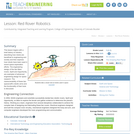
This lesson will start with a brief history of robotics and explain how robots are beneficial to science and society. The lesson then will explore how robots have been used in recent space exploration efforts. The engineering design of the two Mars rovers, Spirit and Opportunity, will be used as prime examples. Finally, the maneuverability of their robotic arms and the functionality of their tools will be discussed.

This material contains a new creation using technologycal tools for improving education.
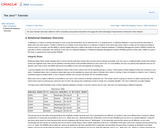
This resource introduces the structure of relational databases, a critical technology behind dynamic, data-driven websites.

This course examines the issues, principles, and challenges toward building relational machines through a combination of studio-style design and critique along with lecture, lively discussion of course readings, and assignments. Insights from social psychology, human-computer interaction, and design will be examined, as well as how these ideas are manifest in a broad range of applications for software agents and robots.
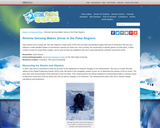
This article describes Katy Farness' work with the Byrd Polar Research Center at the Ohio State University. Farness used remote sensing images and computer technology to create detailed images of Antarctica and the ice sheets of Greenland.

This collection of 103 individual sets of math problems derives from images and data generated by NASA remote sensing technology. Whether used as a challenge activity, enrichment activity and/or a formative assessment, the problems allow students to engage in authentic applications of math. Each set consists of one page of math problems (one to six problems per page) and an accompanying answer key. Based on complexity, the problem sets are designated for two grade level groups: 6-8 and 9-12. Also included is an introduction to remote sensing, a matrix aligning the problem sets to specific math topics, and four problems for beginners (grades 3-5).
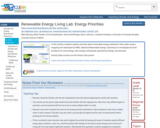
In this activity, students explore real data about renewable energy potential in their state using a mapping tool developed by NREL (National Renewable Energy Laboratory) to investigate the best locations for wind energy, solar energy, hydropower, geothermal energy, and biomass.
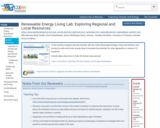
In this activity, students become familiar with the online Renewable Energy Living Lab interface and access its real-world solar energy data to evaluate the potential for solar generation in various U.S. locations.
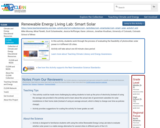
In this activity, students work through the process of evaluating the feasibility of photovoltaic solar power in 4 different US cities.
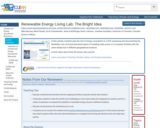
In this activity, students play the role of energy consultants to a CEO, assessing and documenting the feasibility, cost, and environmental impact of installing solar power on 4 company facilities with the same design but in different geographical locations.
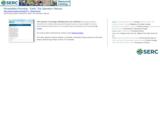
This video segment explores whether, in principle, renewable energy resources could meet today's global energy needs of about 15.7 terawatts.
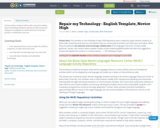
In this activity, students will be able to practice talking about technology. Students will also be able to practice talking to an employee to determine how to fix their product or obtaining a new one.
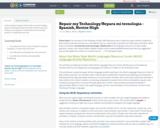
In this activity, students will be able to practice talking about technology. Students will also be able to practice talking to an employee to determine how to fix their product or obtaining a new one.
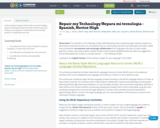
In this activity, students will be able to practice talking about technology. Students will also be able to practice talking to an employee to determine how to fix their product or obtaining a new one.
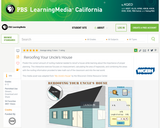
This interactive activity adapted from the Wisconsin Online Resource Center challenges you to plan, measure, and calculate the correct amount of roofing material needed to reroof a house.
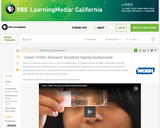
In this video produced for Teachers' Domain, meet Sandra Bustamante, a university research assistant who started her career with a biotechnology certificate and is now using nanotechnology—rather than needles—to deliver vaccines.
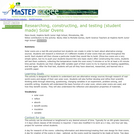
This activity requires students to research, design, construct, and test a solar oven. Students will collect data from their own individual oven to combine with research of "real-life" solar ovens in an activity ending scientific paper.
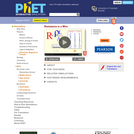
Learn about the physics of resistance in a wire. Change its resistivity, length, and area to see how they affect the wire's resistance. The sizes of the symbols in the equation change along with the diagram of a wire.

This is an activity about image resolution. Learners will recreate a solar image taken by the Solar Dynamics Observatory (SDO) using various sizes of building bricks, and discuss how their recreations relate to image resolution. Learners will also compare SDO images to solar images from older spacecraft to see how improved technology helps scientists learn more about the Sun.